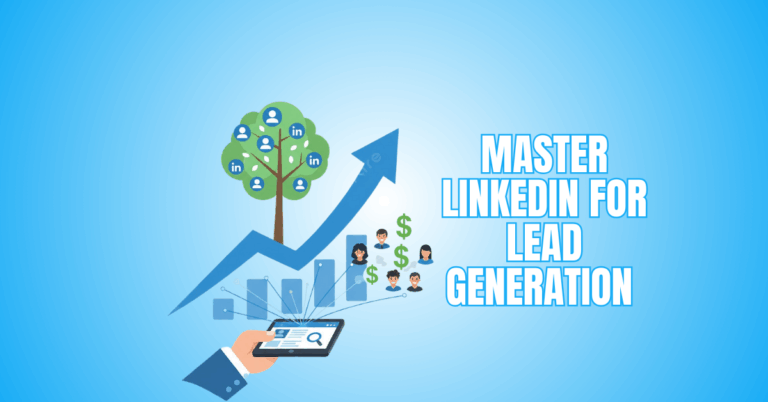Social Media Report Analysis That Drives Real Results
Social Media Report Analysis That Drives Real Results
Understanding your brand’s online presence starts with practical social media report analysis. By breaking down key metrics, trends, and audience behaviour, businesses gain valuable insights to refine their strategies.
This blog dives into how analyzing social media reports can transform raw data into actionable growth. The secret to remaining ahead in the digital world is careful analysis, whether you monitor engagement or campaign performance.
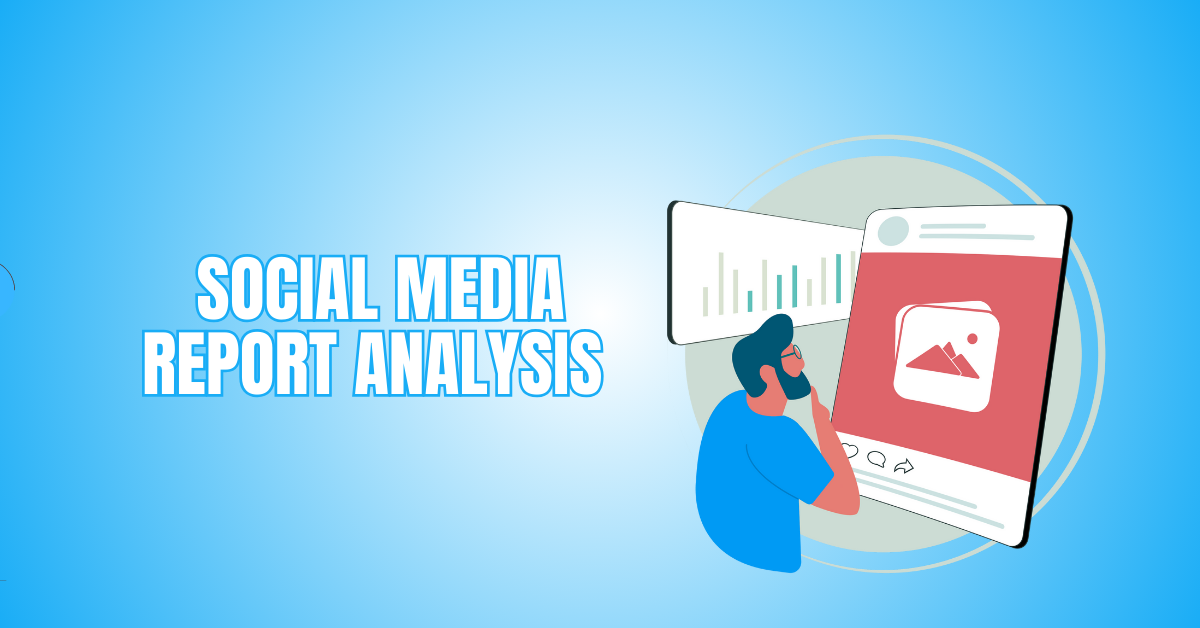
What Is Social Media Report Analysis?
Social media report analysis is the process of reviewing and interpreting data collected from social media platforms to evaluate performance, trends, and audience behaviour.
It involves examining metrics like engagement, reach, impressions, follower growth, and content performance to understand what’s working and needs improvement.
This analysis helps brands and marketers make informed decisions, optimize strategies, and measure their social media efforts' return on investment (ROI).
Reports are often generated using analytics tools and presented in dashboards or summaries, offering insights into campaign effectiveness, audience preferences, and competitor activity.
Components Of A Social Media Report
Social media report analysis transforms platform data into actionable insights, helping businesses measure performance, optimize strategies, and achieve marketing goals effectively.
1. Overview / Summary
The overview concisely recaps the social media performance during the reporting period. It highlights key achievements, growth trends, campaign success, and improvement areas.
This section serves as a snapshot for stakeholders to quickly grasp the impact of social media efforts without diving into detailed analytics.
It should summarize total reach, engagement, and audience growth. Using charts or visual highlights enhances clarity and impact. The summary outlines the most important conclusions and establishes the tone for the remainder of the report.
2. Goals & KPIs
This section defines the objectives for social media activities and the key performance indicators used to measure success.
The objectives include raising conversions, website traffic, and brand exposure. Clearly stating these goals ensures all performance data is evaluated against defined targets.
KPIS include engagement rate, follower growth, CTR, and impressions. Showing the progress toward each goal helps measure effectiveness and justify efforts.
Comparisons with previous periods or set benchmarks provide context, assessing what worked and what needs refinement.
3. Audience Insights
Audience insights provide a deeper understanding of who is interacting with your social media content. This covers demographics including user interests, geography, language, gender, and age.
These insights help determine whether you are reaching the right people and whether your content resonates with them.
Want to Start Making Money Online?
Try My #1 Recommendation Program!
The data is usually pulled from built-in platform tools like Meta Insights or LinkedIn Analytics. Changes in audience segments over time can signal content effectiveness or shifts in reach strategy. Visual representations like pie charts or infographics help share this data clearly and effectively.
4. Platform Performance
A detailed social media report analysis highlights platform-specific performance, helping identify where your marketing efforts are most effective and where strategic adjustments are needed.
It includes metrics like reach, impressions, clicks, and follower growth specific to platforms like Facebook, Instagram, LinkedIn, or X.
This separation helps you understand which platforms drive the best results and which may require more focus or adjusted strategies.
Comparing platform data side by side over time shows growth trends and informs resource allocation. Visual dashboards or summaries enhance readability and make findings easier to act on.
5. Content Analysis
Content analysis evaluates how well different types of posts perform across platforms. It examines engagement, reach, likes, shares, and saves indicators to determine which material appeals most to your audience.
Finding trends in popular formats, publishing schedules, and subjects can help you develop content strategies.
Including examples or screenshots of successful posts adds context to the metrics. This section allows brands to double down on practical formats while refining or dropping less impactful ones. A clear content breakdown ensures your messaging aligns with audience preferences and trends.

6. Engagement Metrics
Engagement metrics reveal how actively users interact with your content and how well your social media strategy fosters community and conversation.
These metrics include likes, comments, shares, saves, retweets, and direct messages. Analyzing these figures helps assess the emotional and practical impact of your posts. High engagement typically indicates relevant, compelling content.
Tracking trends over time can also indicate content fatigue or shifting audience interest. This section should include engagement rate calculations and comparisons to previous periods. Clear visualizations make it easier to identify spikes or dips and tie them back to specific content or events.
7. Traffic & Conversions
This section assesses how well social media drives website traffic and produces conversions, such as leads, sign-ups, or sales.
Tools like Google Analytics and tracked links (e.g., UTM parameters) help identify how users interact after clicking through from social platforms.
Want to Find Out How To Start Your Home-Based Business?
Try My #1 Recommendation Platform!
Metrics like click-through rate, bounce rate, time on site, and conversion rate offer insights into how well your content motivates action.
Including this data helps connect social efforts to broader business goals. Charts and tables showing referral paths and performance by platform clarify where investment is paying off and where optimization is needed.
8. Competitor Benchmarking
Competitor benchmarking provides context by comparing your social media performance against competitors or industry standards.
It helps assess whether your growth and engagement levels are strong relative to others in your niche. This includes evaluating competitors’ posting frequency, follower growth, engagement metrics, and content strategies.
Tools like Sprout Social, Social Blade, or manual audits can provide this data. Sharing insights through comparative charts or graphs helps visualize your position in the market.
Benchmarking highlights opportunities for differentiation and sets realistic goals based on what’s achievable within your competitive landscape.
9. Recommendations
Based on the social media report analysis, the recommendations provide data-driven strategies to enhance future performance by optimizing content, timing, and platform focus.
These recommendations aim to improve future performance by building on what’s working and addressing underperforming areas.
Suggestions might include changing content types, posting times, investing more in specific platforms, or adjusting targeting strategies.
Each recommendation should be tied to specific data points from the report to justify its importance. Presenting these in a bullet list or summary format makes it easy for teams to digest and implement. This section turns insights into practical steps for future success.
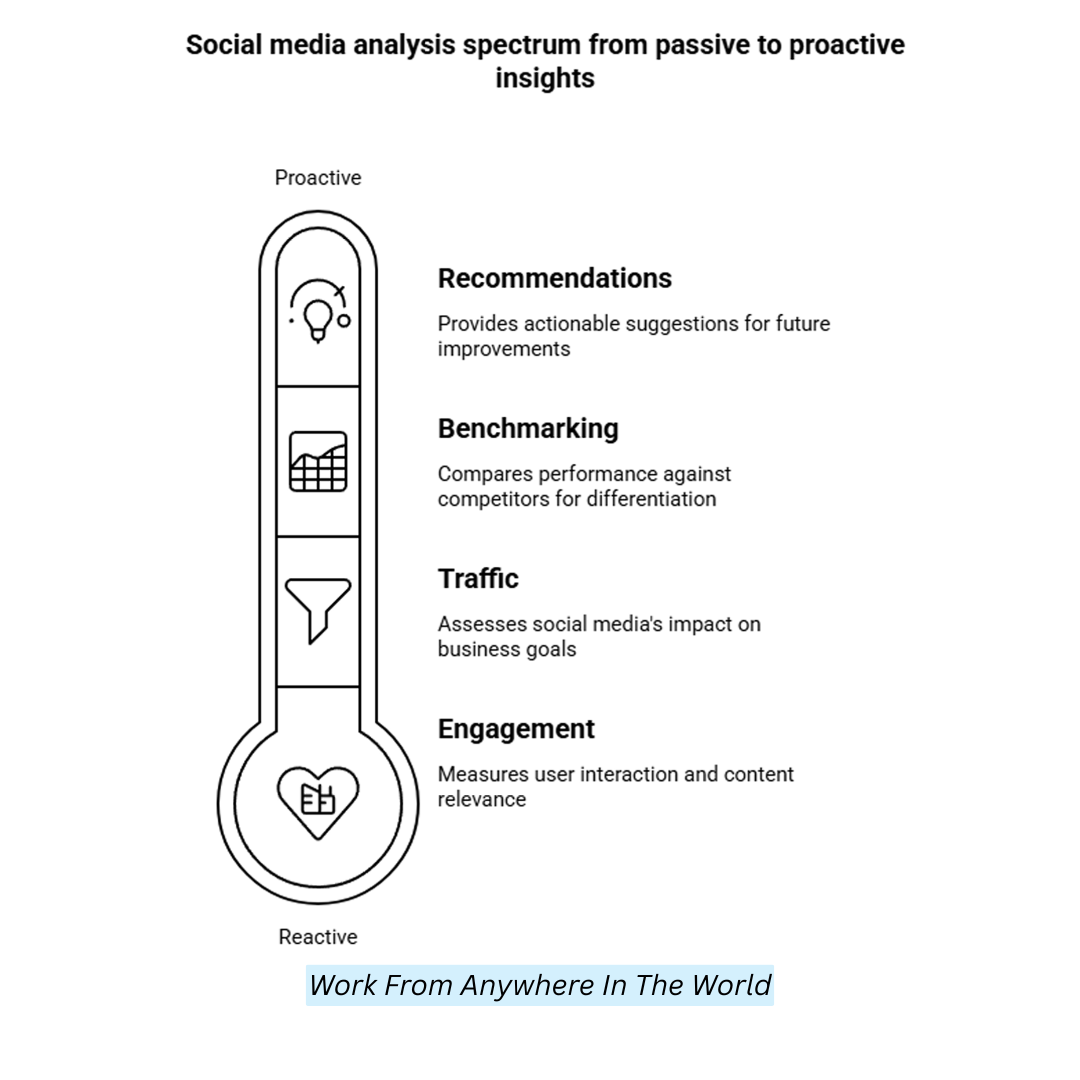
Key Metrics In Social Media Reporting
Not all metrics are created equal. You'll want to focus on specific KPIS depending on your goals—brand awareness, engagement, lead generation, or conversions. Here are the core categories:
1. Likes/Reactions
Likes or reactions are basic signals that your audience finds your content appealing or agreeable. While they don’t measure deep interaction, they are often the first indication of post success and play a role in algorithmic promotion.
A steady stream of likes can suggest strong visual appeal, message clarity, or brand affinity. However, they should always be viewed in context with deeper metrics like comments or shares to assess authentic engagement. Alone, they offer limited insights but remain valuable for quick feedback.
Formula
Like Rate (%) = (Total Likes / Total Impressions) × 100
2. Comments
Comments go beyond passive engagement and reflect genuine interest or emotional response. When users take the time to write something, they seek interaction, share opinions, or ask questions. This makes comments an essential metric for community engagement and sentiment insight.
Are You Tired Of Scams?
Want to Start Making Money Online?
High comment rates often indicate thought-provoking or controversial content. Brands should monitor and respond to comments to foster conversation and build relationships, while assessing the tone of interactions to understand public perception.
Formula
Comment Rate (%) = (Total Comments / Total Impressions) × 100
3. Shares
Shares indicate your content has high perceived value and is worth passing along to others. Without incurring additional expenses, this interaction exposes your content to new people and broadens your organic reach.
Users are more likely to share informative, emotional, or entertaining posts that align with their interests or identity. A high share rate indicates your content is resonating broadly and gaining traction. It also enhances your authority and credibility through peer validation.
Formula
Share Rate (%) = (Total Shares / Total Impressions) × 100
4. Saves
A thorough social media report analysis can reveal how saves contribute to long-term content value and influence platform algorithms, even if they're not publicly visible.
This is common with educational, inspirational, or product-related content that audiences may want to revisit. Though not visible to others, the save signal is powerfully relevant and is used by some platforms to influence content ranking.
Tracking saved trends can help identify your audience's favourite topics or formats. High save rates suggest you’re producing applicable, evergreen content that continues delivering value.
Formula
Save Rate (%) = (Total Saves / Total Impressions) × 100
5. Reach
The total number of unique users that have visited your content is known as your reach. It’s a critical metric for measuring content visibility and audience growth potential.
High reach indicates effective distribution or viral potential, while low reach might point to poor timing, weak targeting, or low engagement.
Reach is especially useful in brand awareness campaigns and launch strategies where exposure matters. Unlike impressions, reach only counts each viewer once, making it a more precise measure of audience penetration.
Formula
Reach = Number Of Unique Users Who Viewed Content
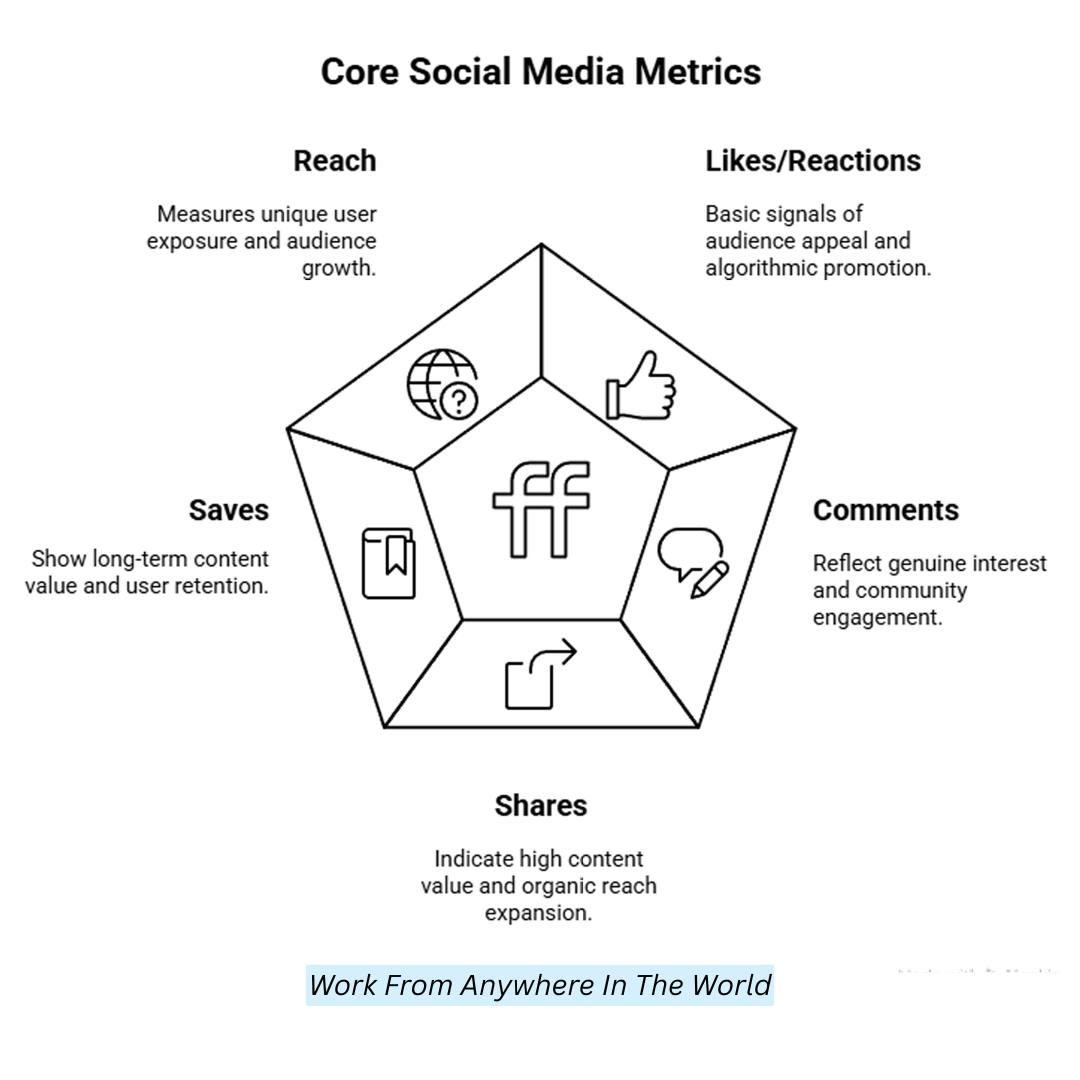
6. Impressions
Impressions show the frequency of presentation of your material, including views from the same person. This metric gauges visibility and frequency but doesn’t guarantee user attention. High impressions may result from shares, reposts, or paid promotions.
Comparing impressions to engagement helps identify content quality—lots of impressions but low interaction may suggest content fatigue. It’s valuable for analyzing exposure over time, especially in campaigns with awareness goals.
Formula
Impressions = Total Number of Times Content Was Displayed (Including Repeats)
7. Follower Growth
Social media report analysis uses follower growth data to assess brand popularity, content effectiveness, and the overall success of marketing campaigns.
Want To Learn How To Create Your Own Website And Online Business?
Try My #1 Recommendation Training And Hosting Platform!
It provides insights into your brand’s popularity, content appeal, and campaign success. Positive growth reflects increased interest or visibility, while negative growth may indicate missteps or dissatisfaction.
This metric is handy when tied to events, promotions, or collaborations. It’s more meaningful when expressed as a percentage change rather than raw numbers, enabling better comparison across periods or platforms.
Formula
Follower Growth Rate (%) = [(New Followers – Unfollows) / Starting Followers] × 100
8. Click-Through Rate (CTR)
CTR measures how effectively your content prompts users to take action by clicking a link. It’s essential for driving traffic to websites, landing pages, or e-commerce stores. A high CTR shows that your call-to-action, visuals, or copy are compelling and relevant.
Low CTRS may signal weak targeting, unclear messaging, or poor design. Optimizing headlines, link placement, and audience segmentation can help improve this metric.
Formula
CTR (%) = (Total Link Clicks / Total Impressions) × 100
9. Conversion Rate
The number of people who finished a task after clicking on a social network link is known as the conversion rate. This could be a purchase, a signup, a download, or a tracked action. It reflects the alignment between your content and the landing experience.
High conversion rates mean strong intent and user satisfaction, while low rates may suggest friction or disconnect. This is one of the most critical metrics for performance marketing and ROI tracking.
Formula
Conversion Rate (%) = (Conversions / Total Link Clicks) × 100
10. Engagement Rate
Engagement Rate is a comprehensive measure that combines all user interactions—likes, comments, shares, and sometimes saves—to evaluate overall content effectiveness.
It normalizes engagement by dividing it over total followers or impressions, allowing for fair post comparison. High engagement means your audience finds value and relevance in your content. Low engagement may suggest reassessing content strategy, post timing, or design.
Formula
Engagement Rate (%) = [(Likes + Comments + Shares + Saves) / Total Followers] × 100
11. Sentiment Analysis
Sentiment analysis evaluates the emotional tone of social media comments and mentions, classifying them as positive, negative, or neutral.
It’s vital for brand reputation management, allowing businesses to track public perception and respond proactively to negative feedback.
This metric adds qualitative depth to quantitative data, helping identify emerging issues or trends in user sentiment. Automated tools can streamline the analysis at scale.
Formula
Sentiment Score = (Positive Mentions – Negative Mentions) / Total Mentions
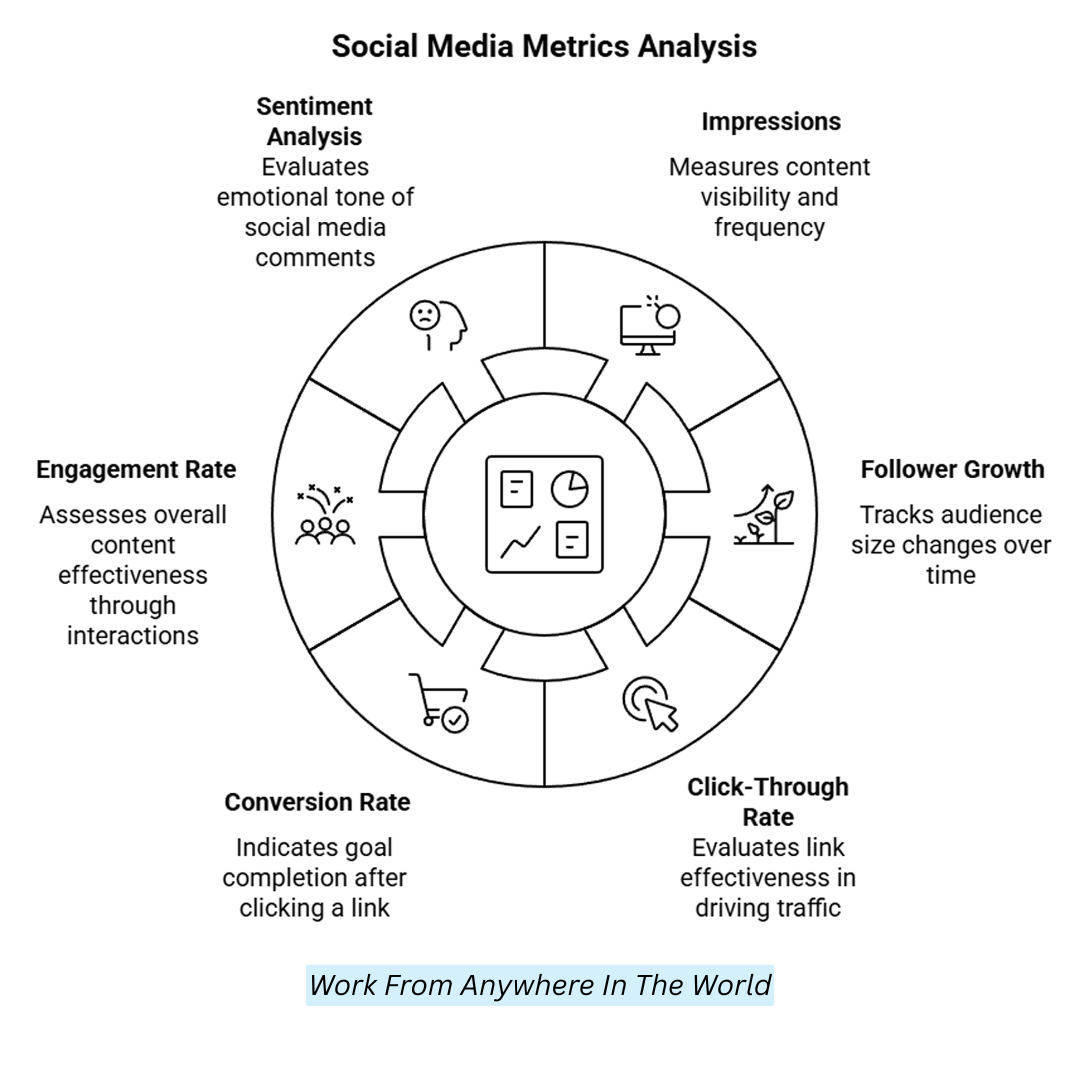
Tools For Social Media Report Analysis
Analyzing social media metrics is essential for growth. These top platform-specific and cross-platform tools help track performance, understand audiences, and optimize content strategies.
1. Facebook Insights / Meta Business Suite
Delivers in-depth metrics for Facebook and Instagram posts, stories, and audience engagement. Tracks reach, clicks, and demographics.
Enables businesses to optimize content strategy, scheduling, and targeting by analyzing audience behaviour and identifying performance trends.
2. Instagram Insights
Built into the app, this tool tracks post engagement, impressions, reach, and follower activity. It separates performance by content type, Reels, Stories, and posts, helping creators refine timing and improve interaction based on real audience data and content responses.
3. LinkedIn Analytics
Provides performance insights on post views, engagements, click-through rates, and audience details like job titles and industries.
It supports B2B marketers by highlighting high-performing updates and tracking follower trends, boosting content planning and professional brand visibility.
4. Twitter / X Analytics
Analyzes tweet impressions, engagements, and profile visits. Offers metrics on follower growth and content performance over time.
Helpful in refining post frequency, content style, and hashtags to increase engagement and expand audience reach on the platform.
5. TikTok Analytics
Tracks video views, likes, shares, audience geography, and follower growth. Divides data by content type and trending sounds.
Helps brands and creators monitor viral performance and tailor short-form video strategies to maximize engagement and platform impact.
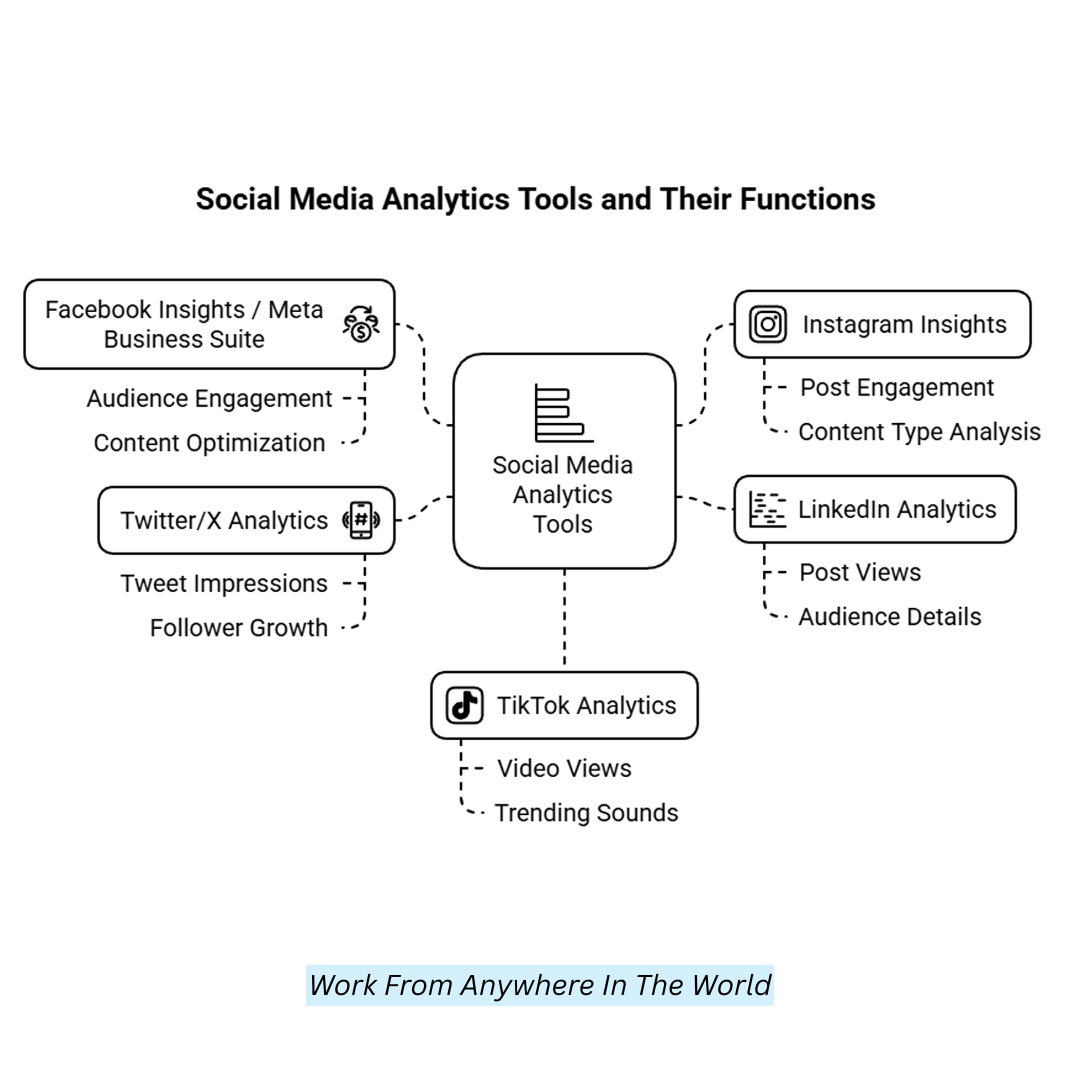
6. YouTube Studio
Offers detailed metrics like watch time, click-through rates, audience retention, and traffic sources. Analyzes subscriber behaviour and video performance. Ideal for creators wanting to adjust content and publishing times based on viewer interest and engagement trends.
7. Sprout Social
Centralizes social data across platforms into one dashboard. Provides analytics, competitive benchmarking, engagement tracking, and scheduling.
Designed for teams and agencies needing detailed reports and data-driven insights to enhance content strategy and social media performance.
8. Hootsuite
Integrates posting, monitoring, and analytics across social channels. Tracks clicks, shares, engagement, and follower patterns.
Enables businesses to streamline social workflows, analyze content effectiveness, and coordinate strategies through a unified, easy-to-use platform.
9. Buffer
Simplifies social media scheduling while offering analytics on reach, clicks, and engagement. Presents visual reports to understand post-performance quickly. Ideal for individuals or small teams aiming to grow their online presence and refine content strategies efficiently.
10. Later
Features a drag-and-drop visual calendar, Instagram link tracking, and performance metrics. Designed for brands focusing on Instagram, it supports visual planning, content scheduling, and data analysis to improve reach and engagement through appealing, timely posts.
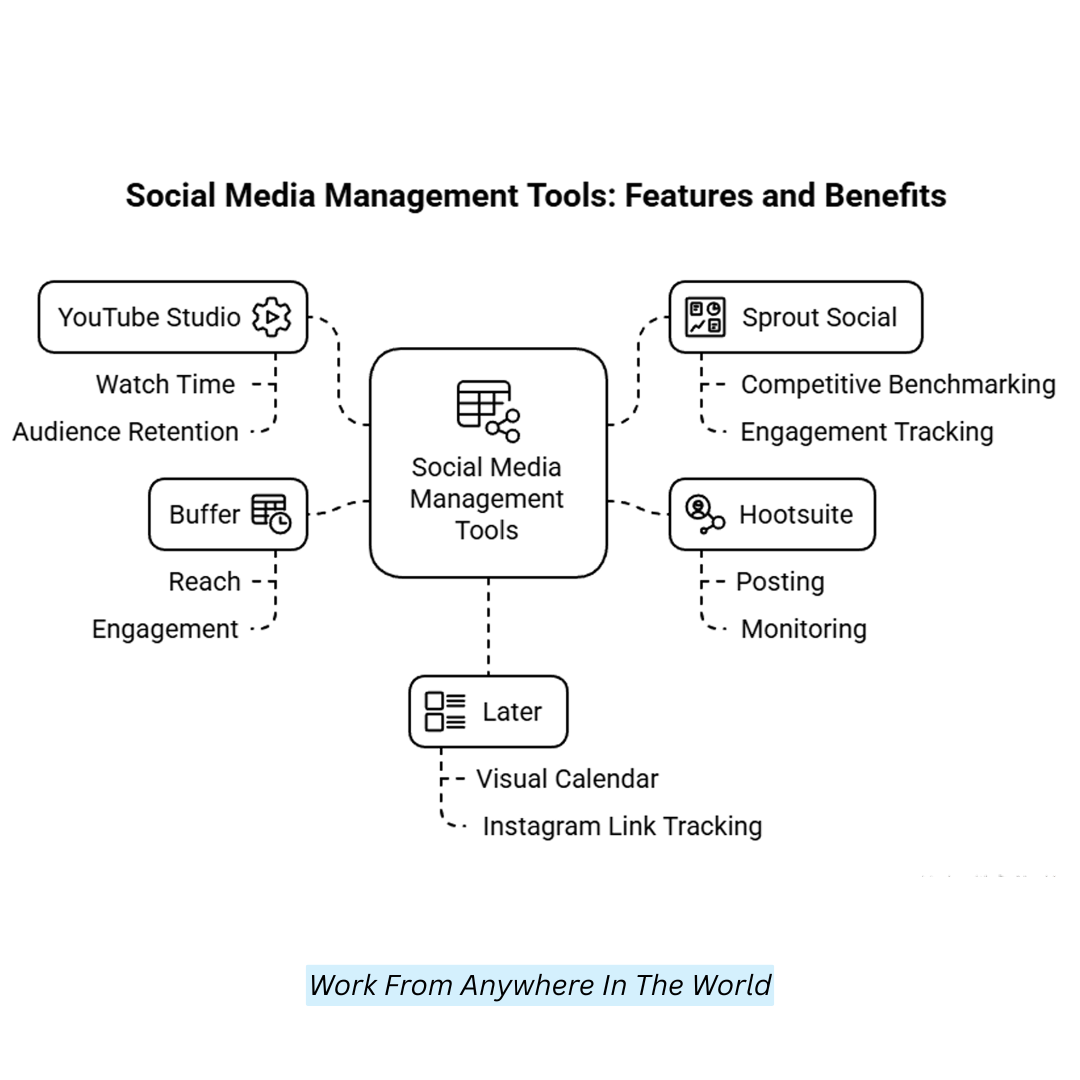
Conclusion
In today’s competitive digital landscape, social media report analysis is the foundation for making informed, strategic decisions that drive consistent growth and engagement.
Regularly reviewing and interpreting your social metrics ensures you align with your goals and audience expectations. From boosting engagement to optimizing content, informed decisions start with precise analysis.
Keep evaluating, keep adapting—because in social media, the brands that measure smartly are the ones that grow consistently.
I trust you enjoyed this article about the Social Media Report Analysis That Drives Real Results. Please stay tuned for more articles. Take care!
JeannetteZ
Want to Learn How to Build Your Own Home-Based Online Business And Start Making Money Online From Your Comfortable Couch?
Try Wealthy Affiliate!
Your Opinion Is Important To Me
Do you have thoughts, ideas, or questions? I would love to hear from you. Please share your questions, experiences, remarks, and suggestions about the Social Media Report Analysis That Drives Real Results in the comments below. You can also email me at Jeannette@WorkFromAnywhereInTheWorld.com.
Disclosure
This post may contain affiliate links. I earn from qualifying purchases as an Amazon Associate and through other affiliate programs. Please read my full affiliate disclosure.
You may also enjoy the following articles:
Wealthy Affiliate Coupons For Premium Memberships
Wealthy Affiliate Review – Scam or Legit? The Truth Exposed
An Insider Wealthy Affiliate Review
How To Install A WordPress Theme
Winning Small Business Event Ideas For Lasting Impact And Profit
Best Rank-Tracking Software To Optimize Your SEO Performance
Effective SEO Strategies For E-Commerce Sites To Boost Conversions







